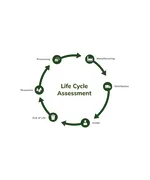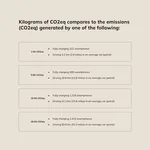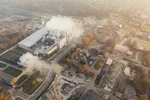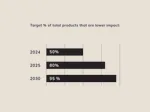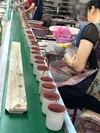Carbon footprint
At Vinga, addressing our carbon footprint is a top priority. We’ve tracked our company’s impact since 2019 and, as of 2023, have been fully transparent about the CO2 emissions. Every product on our website clearly shows its carbon footprint*. This footprint is calculated through a Life Cycle Assessment (LCA). This footprint was our first step to offering our customers a choice of selecting products with a lower impact.
*Not all items on our gift cards display this.
WHAT IS AN LCA?
A Life Cycle Assessment (or LCA) is the calculation of the impact of a product during its lifetime. This method is most commonly used for CO2 footprint calculations. A product’s life consists of several life cycle phases such as raw materials; production; packaging; transport; usage; and end-of-life/disposal.

